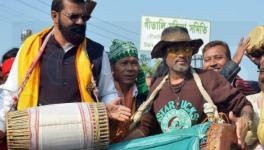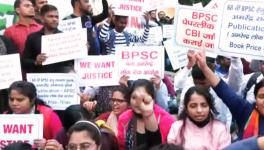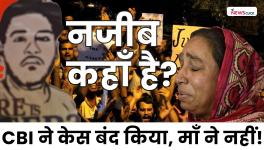The Delhi gangrape case has led to country-wide outrage, with young women and men still pouring out on to the streets to protest against the widespread culture of sexual violence.
The outrage has not just stopped at Jantar Mantar, India Gate or university campuses; it has also led to a wave of intellectual reflection on the issue. For most protesters the demand for justice has not stopped with the Delhi gang rape victim, but has led to a demand for justice for all victims of sexual violence. These protesters have forced us to remember a litany of names that get buried by the TRP driven media and a public with a notoriously short attention span of memory. It is time to remember names that we are losing to public amnesia, names like Soni Sori, Manorama, Asiya and Neelofar. It is time we remember another forgotten name – Laxmi Orang.
In the Interest of Remembering: Who is Laxmi Orang? On 24th November 2007, Laxmi Orang, a young adivasi woman, was forcibly stripped naked, thrashed and paraded by a violent mob of “mainstream” Assamese [1] men.
This took place just 100 meters away from State Legislative assembly, in the very heart of Guwahati, in the full glare of the media and police forces. As with her fellow protesters, it was her first trip to the city, the mythical land where the modern day Swargodeo’s [2] listen to their subjects, where appeals are heard, where miracles happen, where riches and wonders thrive. She had come to the city as participant of a protest organized by the All Adivasi Students’ Association Assam (AASAA) to demand Schedule Tribes status for the Adivasi community of Assam.
[CNN-IBN report on the horrific incident] Laxmi’s first trip to the city did not unfold in a way that she could have ever imagined. As is in the case of all corrupt capitals of North East India, a region where ‘plastic-democracy’ is the norm of the day, where the Establishment pays attention to you only if you are backed by insurgent guns, the Government was indifferent to the peaceful protesters. AASAA representatives were told by the security apparatus that they do not have the necessary permissions to stage their demonstration. Angry and frustrated, the organizers decided to march back and asked their followers to raise slogans. While the angry protesters were marching back from where they had started, a local youth on his motorcycle injured a woman protester. A scuffle ensued as the protesters asked the biker to take the girl to a hospital, but he refused. Angry protesters took over the street and smashed few cars parked on the roadside. Within minutes a mob of local youth gathered and reacted violently. Raised in the violent milieu of land mafias and surrendered insurgent-run syndicates which control almost everything in the city, the smashing of the cars by the ‘newly arrived’ denizens was intolerable to the local residents. Quickly they encircled the protesters and beaten up everybody in the road who remotely resembled a ‘coolie’[3]. It is at this point that the mob of young Assamese men got hold of Laxmi and brutally thrashed, kicked and striped her. A naked Laxmi kept running on the road looking for help. No one came forward to help. Local residents continued to laugh and deride her. In the context of this attack, one protester died and hundreds were seriously injured.
Under pressure from human rights organizations and out of fear of losing the ‘Coolie’ vote bank, the Government immediately formed an enquiry commission headed by Manisana Singh to investigate the incident. And as it happens with the majority of these committees and commissions set up by the Government, the Singh Commissions’ report is still awaited.
The Predicament of Gender Question in Assam
Protests and public debate around sexual violence have been a regular feature in Assam from early 1990s. In the early 1990’s, when the anti - United Liberation Front of Assam (ULFA) operations by the Indian Army was at its peak, a number of local civil society organisations, along with national human rights groups, brought to light numerous cases of sexual violence committed by the army against Assamese women. Many of those survivors have since become household names in the state. They became symbols of the violations committed by a hyper-masculine Indian nationalism. Tragically, those important struggles couldn’t forge solidarities with struggles against discrimination and violence faced by women in their everyday lives. Instead, the violations committed by ‘India’ became another pretext to enthuse new dosages of misogyny within the society. The whole question got reduced to a discourse of “our women” being violated by “their men” albeit in uniform.
Assamese love saying that in the North-East, women are treated with greater dignity. In May 2012, a Youtube video went viral among young people from the region. In the video, with all good intention,
a young Assamese woman declared the progressiveness of the North-East in its treatment towards women. This was a clip from the Aamir Khan soap opera, Satyameva Jayate. Facebook, Twitter and other social media platforms were ablaze with self-congratulatory messages and status updates. For instance one comment read,“Northeast is always gonna stay ahead in terms of Modernization than Mainland India” while another says “slowly but surely...people are getting to know that we North East is a force to be reckoned in a world going southwards to hell...”. This self-congratulatory euphoria, however, runs contrary to what statistics of National Crime Records Bureau show. Assam has the second highest rate of crime against women in the country. The infant and maternal mortality rates are also very high in the state and even the sex ratio at birth is not very different from highly discriminatory regions/States like Haryana and Punjab.
This celebration of gender equality in Assam, unfortunately, didn’t last long. Within weeks from the Satyameva Jayate episode,
the infamous Guwahati molestation incident took place. In this incident a teenage girl was assaulted and molested by a mob of 30 men outside a Guwahati Bar in front of TV cameras. Following this molestation case there was an outpouring of outrage. Many who took to the streets were not motivated by an outrage against sexual assault in general, but were highly concerned about Assam’s public image getting tarnished due to the video of the molestation which went viral. Banners, posters and hoardings sprang up overnight in the streets of Guwahati proclaiming the men involved in the incident as having vitiated Assamese society and its values.
However, there was no outcry against the brutal assault on Laxmi Orang. Newsrooms in New Delhi were largely indifferent, as was the Assamese public. Instead, from the very next day regional commentators talked about the possibility of a governmental conspiracy, some focused on the government’s inactivity, its inefficiency in ‘diverting the Adivasi mob’; others hinted that many of the protesters had come in a ‘drunken state’ and were clueless about what they were protesting against.
What was completely missing from all these discussions, however, was any introspection about Assamese society. Why was there no concern for Laxmi and her fellow adivasi protesters? What precisely produced such levels of violence? It was quite clear that Assamese society, including its minuscule progressive left sections, was not ready to ask uncomfortable questions and confront their own hypocrisies. While it was easy for the bigoted commentators to blame Assam Government for its ‘failure to keep away unwanted Adivasi protesters’ from the streets of Guwahati, nobody dared to address the simple fact that Assamese society is gripped by monstrous levels of racism, sexism, and intolerance for marginalised groups.
Laxmi’s case is symptomatic of the strange predicament that the gender question faces in north-east India, a militarized region, endlessly balkanized by ethno-nationalist politics. Being an adivasi woman it is not surprising that Laxmi’s case did not get any attention that the gravity of the case demanded. The reason for the apathy was that she was not even an “Assamese” woman. Or to put it in another way, she was not Assamese enough.
So perhaps one can also say that what was specific about the silence around Laxmi and many women like her was the fact that she was not assaulted and brutalised by the army or security forces, but by civilians; some city dwelling Assamese men. It is easy to point finger at others, it is much harder to confront the ugly image of oneself that reveals uncomfortable truths.
At a time when the country is reeling under the weight of an endless number of cases of sexual atrocity, let us promise to remember those that are easier to forget.
Mayur Chetia is a Research Scholar at the Centre for Historical Studies, Jawaharlal Neheru University. Bonojit Hussain is a Delhi – based independent Researcher. Both are activists with New Socialist Initiative (NSI)
[1] Mainstream Assamese is phrase used to denote valley based non - tribal caste Hindu and Muslim population of Assam.
[2] In the early 1990’s when Indian army atrocities in the state was at its peak, the then Chief Minister Hiteswar Saikia was awarded with numerous honorary titles by his sycophants. ‘Swargodeo’- literally ‘the one who has descended from heaven’ - a term used to denote the pre-colonial Ahom kings - was one of them.
[3] A 19th century epithet given to the central and east Indian adivasis who were forcibly migrated to the tea plantations of Assam by colonial authorities with active mass enthusiasm and support of caste Hindu Assamese Bhadralok.
Disclaimer: The views expressed here are the author's personal views, and do not necessarily represent the views of Newsclick
























